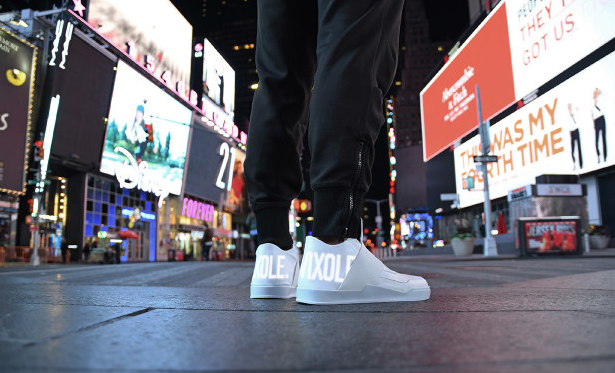For more than three decades now, sneakers have been a cultural symbol of the urban lifestyle, and in 2016 have never been as popular. Now, as slow on the uptick as ever, high fashion companies and their devotees are adopting them in the interest of the prevailing trend of the day — making it the perfect time for something like Vixole to come along and capitalize.
The Vixole is a connected sneaker equipped with an LED screen to show off either custom or pre-made designs with the help of a companion smartphone app. It comes in three different versions draped in a black or white colorway. The Vixole Basic comes with a monochrome LED screen, access to the design marketplace to download visuals, wireless charging capabilities, and eight-hour battery life. The Vixole Plus comes with everything the Basic does and tacks on a wide range of sensors that work with its open API for virtual reality integration using the sneaker’s built-in motion detection.
It also has the ability to visually respond to both motion and sound, the ability to track steps, and sports NFC integration. The Vixole OLED Limited Edition is limited to 300 pairs and swaps out the monochrome LED display for a bright, vibrant flexible OLED display for visuals that really catch the eye. Despite the Vixole’s technology, the sneakers are water and heat resistant to stand up to tough city weather. The Vixole Basic starts at $150, the Plus starts at $195, and the OLED Limited Edition pair goes for $300. The campaign seeks $30,000 by January 9th and the footwear is expected to reach the feet of backers by June.
Instead of more pragmatic footwear like the device-charging Power Kicks or the auto-lacing Powerlace, the Vixole’s approach is a more traditional appeal to the fashion-conscious consumer that works. A sleek, modern profile that doesn’t end up looking too tacky despite one’s expectations of light-up sneakers goes a long way. The monochrome LED screen is a slip-up though: each version should come with at least some capacity to render colors. Making the OLED version limited, while there’s precedent for something like that, doesn’t make much sense in the long run. It wouldn’t be surprising if the OLED version becomes standard going forward.
